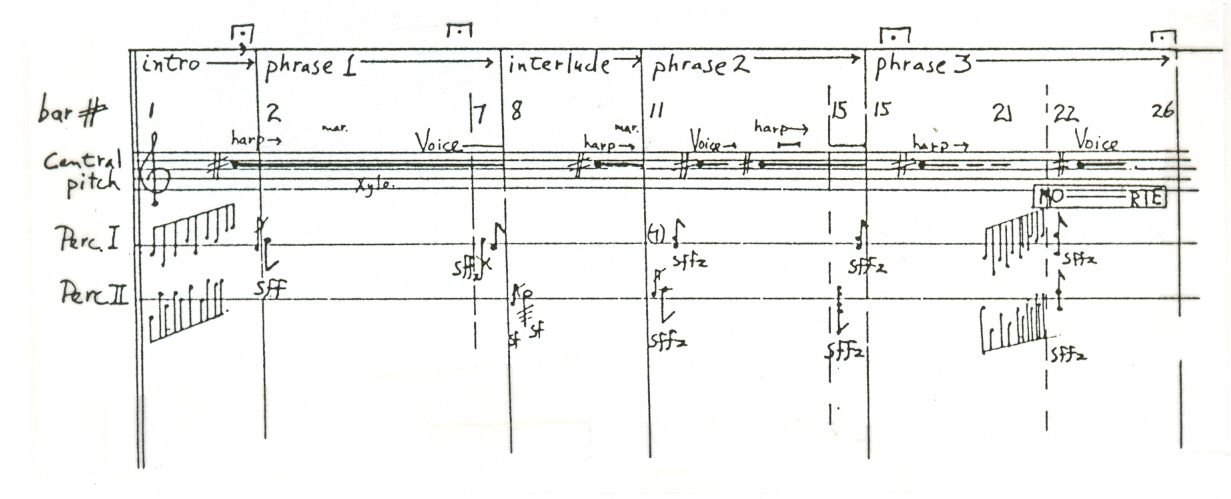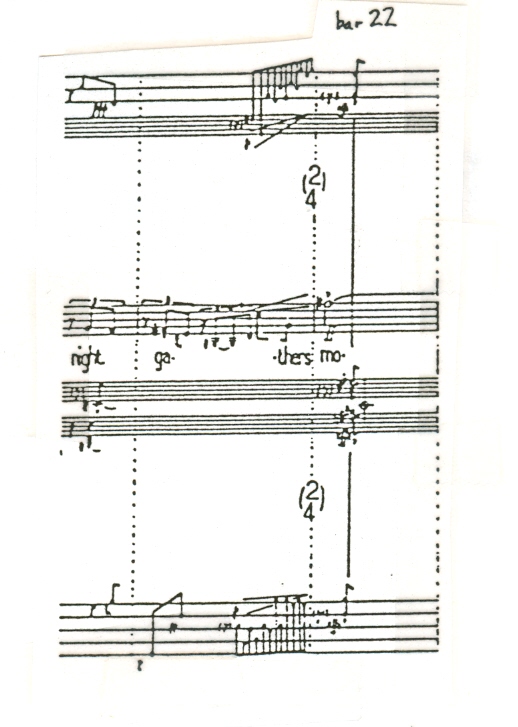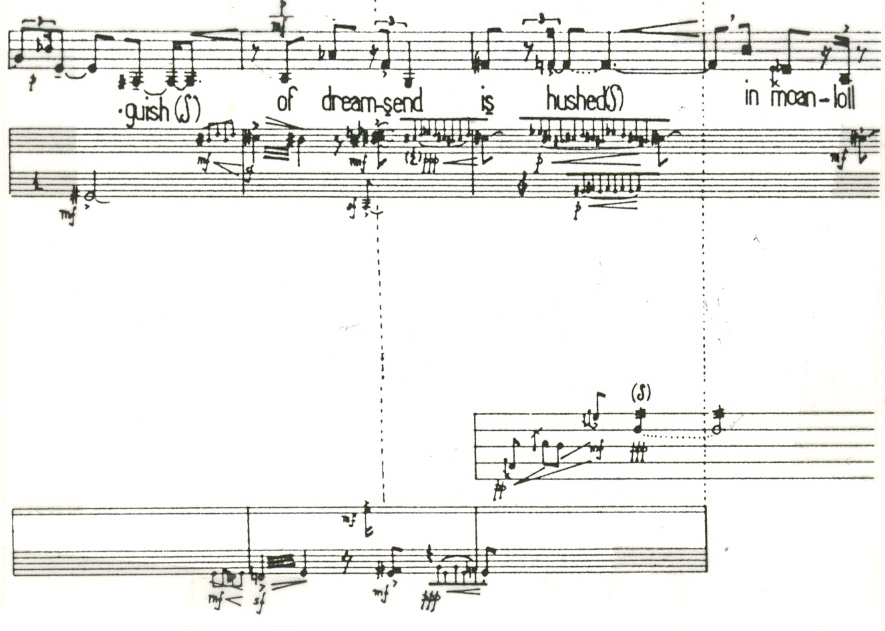Text and Music in Luciano Berio's Circles
David Evan Jones
At critical points of
change in the evolution of musical languages, text and approaches to text-setting are often given a structural importance they do not have when the syntax of the musical sound itself is more self-evident. Monteverdi's text-dependent use of dissonance in the secunda prattica
and the text-driven structures of Schoenberg's Pierrot Lunaire are only the most
obvious examples.
Berio's Circles was composed in the transitional years following World War II. It is notable as one of the earliest and most successful
uses of proportional notation, in the
unprecedented orchestration and notation of the elaborate arrays of percussion, and - most importantly for the current study - for the authority granted to text over the timbral, gestural, and structural organization of the piece. I have chosen to examine the first half of
the second movement - bars 1 to 26 - to illustrate some of the text-setting
techniques Berio employs.
Structure
The structure of the
passage is diagrammed in Figure 1. The text falls into three phrases, each of which is framed in one of the three diagrammed phrases. As indicated in Figure 1, these phrases are articulated by:
1) the sforzandi in the percussion, 2) the fermatas, 3) harmonic/melodic considerations to be discussed below.
1)
The
indicated sforzandi (easily the loudest in the
passage) function to initiate activity
after a rest or held note as in bar 2 (Figure
2), or to terminate activity as in bar 22 (Figure 3). These sforzandi thus articulate boundaries of activity - and the
phrase-structure of the piece.
2)
As
indicated in the diagram, the placement of the fermatas
reinforce the perception of this phrase-structure.
3) The C-sharp in the middle of the treble clef functions as a continuing pitch center - not a tonic as such - but a point of arrival and departure for the second movement. In the first phrase, for example, the C-sharp does not occur in the voice until the end (bar 6). (See Figure 4.) This parallels the structures of the introduction (bar 1) and the interlude (bars 8 10) in that the C-sharp is not stated (by the harp in these cases) until the ends of these sub-sections as well.

Figure 1

Figure 2

Figure 3

Figure 4
In phrase two, the C-sharp occurs at the beginning, middle, and end of the vocal line. (Figure 5) In phrase three, the voice again avoids the C-sharp until the climax on morte near the end of the phrase. (Figure 6) Thus the first and third phrases of the vocal line (and the introduction and interlude) share the common feature of moving to the tonal reference point. The symmetrical appearances of the C-sharp in the central second phrase gives, in turn, a certain symmetry to the pitch structure of the passage as a whole.

Figure 5



Figure 6
The final appearance
of C-sharp in the passage is in the melisma on the word morte in bar 23. Morte can be seen as the climax of the movement for several reasons. In Figure 1, it can be seen to coincide with two structurally important moments in the percussion parts: 1) The same percussion gesture which introduced
the second movement (bar 1)
Setting the Sound of the Text
The organization of the
sforzandi, the fermatas, and the recurring tonal reference serve as a structural frame for a continuous interaction
of the text and music throughout the movement. There
are the traditional devices of word-painting: Tomb in
measure 5 is sung on the lowest vocal pitch in the passage. Rain in measure 13 could be said to be represented by the instrumental trills. The dying downward glissando of morte is
unmistakable. Of more immediate interest, however, are the extrapolations from the speech sounds in the text
to the timbre and figuration in the instrumental parts.
The vocal part occasionally adopts a "detache" style which prevents us from tracking the voice from one pitch (and one speech sound) to another as easily as we might. In this context, a percussion sound may seize our attention in place of the voice - as in Figure 7 where a very soft snare-drum roll extends the /S / of hushed. Berio indicates the function of the snare-drum roll in this passage with a /S / clearly indicated in the percussion part as well as in the voice.

Figure 7
Another striking example of these pseudo-consonants which abound in this movement occurs on the rolled r of the word morte. The rolled r in the voice is extended (durationally and by timbral extrapolation) by a woodblock roll in percussion I (see Figure 8.) Again Berio indicates the function and, presumably, the speed of the roll by notating the consonant / r / in the percussion part.

Figure 8
Coming as it does at the climactic moment of the movement, this overlap between speech (the rolled r) and
non-speech (the woodblock roll) calls to mind the predominant percussion
and harp figuration of the movement: trills. Morte,
therefore, serves not only as the dramatic and structural climax of the
movement, but as the source of the movement's characteristic instrumental
figuration as well. Berio thus draws upon all aspects of the text - from the syntax of the
phrases to the details of the speech
sound - to structure this passage. There can be little doubt, in this
context, that his careful attention to the timbres of
the text are inspired by the aesthetic of the author of these poems: e.
e. cummings.